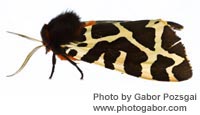 This page has been mothballed.
This page has been mothballed.
Shahtoosh fibres
(Prof. Kenneth D. Langley, USA)
Introduction
Very fine diameter fibres, known as Shahtoosh, are used in the production of Kashmiri shawls, including the famous ring shawl, so-called because the shawls can be pulled through a finger ring. However, the trade in Shahtoosh is illegal.
Survey of Literature
In early works describing the analysis of cashmere and other down producing animals, Young (1,2) mentioned ring shawls, and speculated that the fibre came from a goat. In that study, over 100 fibre samples were tested, one of which was described as Shah Tosa super fine cashmere. These had a mean fibre diameter (MFD) of 11.45 microns. The standard deviation (S) and coefficient of variation (CV) were 1.78 microns and 15.55%. This compares to MFD=13.10 microns, S=2.50 microns, CV=19.08% for the finest Chinese cashmere in that study. It also was noted that the fibres' scales has an appearance different from that of cashmere. However, at that time, the connection was not made between those very fine fibres and the ring shawls. Now it has been established that these shawls are made from fibres called Shahtoosh, the undercoat of the Tibetan Antelope.
The Tibetan Antelope is the common name for Pantholops hodgsonii, 1834, Order Artiodactyla/ Family Bovidae (3). It is also known as Chiru and Orongo. The animal lives in the Chang Tang plateau of northern Tibet at an altitude of over 5000 metres in herds numbering about 2000-8000 (4). The mean shoulder height and weights of adults were reported as 94 cm and 36 kg. (5). The animal are killed for their fibre (approximately 150 g per animal) which reportedly has been shipped through Nepal and then to Kashmir for spinning and weaving (4). The commerce of this fibre is illegal under the Convention of International Trade in Endangered Species of Wild Fauna and Flora (CITES).
The World Conservation Monitoring Centre (6) maintains a Red List, which gives Pantholops hodgsonii Vulnerable status (http://www.wcmc.org.uk). This animal also has been placed on the World Wildlife Fund list of the nine most threatened species by illegal and unsustainable trade (7). The Pantholops are closely related to the Saiga Tatarica of which there are two subspecies, the saiga Antelope whose range is Mongolia and China, and the Russian saiga Antelope of Siberia. Examples of both Saiga subspecies are maintained by zoological societies (8).
Fibre analysis
We examined reference samples of Shahtoosh fibre, colour light brown. The diameter measurements of N=500 fibres, using projection microscopy produced the following statistics which are close to those of Young (1952):
It can be confirmed that the scale structure differs from that of cashmere: Shahtoosh has an irregular waved mosaic pattern, with a mean scale length of approximately 18.8 microns (5.3 scales/100 microns), S=2.36 microns, based on sample size N=100.
References
1. Young, S.S., Cashmere and the Undercoat of Domestic and Wild Animals
2. Burns, R.H., v-Bergen, W., Young, S.S., Cashmere and the Undercoat of Domestic and Wild Animals, J. Text. Inst., Vol. 53, No.2, T45-68, Feb. 1962.
3. Anderson, S., Jones, J.K., Ed., Orders and Families of Recent Mammals of the World, John Wiley & Sons, 1984.
4. Schaller, G.B., Snow Antelope, In Natural History, Museum of Natural History, New York, May 1996.
5. Schaller, G.B., Mountains Monarchs, University of Chicago Press, Chicago and London, 1977.
6. Chapman, M., Private Communication, World Conservation Monitoring Centre, cambridge, UK, 22 October, 1997.
7. World Wildlife Fund, Most Endangered Species, http://www.wwf.org.uk/core/wildlife/endangeredspecies.asphttp://www.wwf.org/species, 1997.
8. ISIS, ISIS Abstracts, http://www.journals.uchicago.edu/Isis/home.html, 1997.